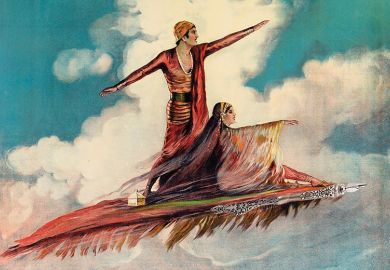On April 21, 1825, John Clare left his cottage in Helpston, Northamptonshire: "I went to take my walk today and heard the Nightingale for the first time this season in Royce Wood . . . we may now be assured that the summer is nigh at hand."
In this natural history letter, Clare describes in sharp detail the habits and habitat of the nightingale. He sees with an ornithologist's as much as with a poet's eye. The account is uncluttered, the imagination unperplexed by Romantic iconography, and the dialect rough and direct. "I have watched them often at their song their mouths is open very wide and their feathers are ruffled up and their wings trembling as if in extacy." This is not Keats's nightingale, and it is certainly not Wordsworth's cuckoo or skylark or sparrow.
Clare's nightingale does not sing a song that "hath/Charm'd magic casements, opening on the foam/Of perilous seas, in faery lands forlorn". It is a real bird, alive, egg-laying, nest-building, and Clare's own poem "The Nightingale's Nest" is in part derived from his natural history notes, as Hugh Haughton points out in his essay in this interesting and thought-provoking collection. But Clare was simultaneously well aware of the literary fashion for fabulous nightingales, and the possible rewards to be stolen from their phoenix-like nests: "Londoners are very fond of talking about this bird & I believe fancy every bird they hear after sunset a Nightingale. I remember when I was there last . . . we saw a gentleman & lady listening very attentive by the side of a shrubbery and when we came up we heard them lavishing praises on the beautiful song of the nightingale which happened to be a thrush."
Unfortunately Clare could not escape the airy influence of Keats's drawing-room dryad. During "The Progress of Ryhme", Clare with a delicious precision, transcribes the liquid song of the nightingale: "Chew chew chew chew chew . . . up cheer up cheer up . . . wew wew wew . . . tee rew tee rew tee rew . . . gur-chew rit chew rit-chur-chur chur . . . tweeet em jug jug jug jug". But he then offers a cod-Romantic, sub-Keatsian gloss on this natural verse, prettifying his poetry-in-the-raw, "Could they be birds that snug so well." This bathetic crash shows the grotesque contradiction in Clare's career as a Romantic writer. Unable to verify successfully the claims of the Romantic imagination through natural observation, Clare juggled with multiple identities, and from being celebrated as a "peasant poet" he became incarcerated as a "mad poet". In Northamptonshire General Lunatic Asylum, where he spent the last 22 years of his life, he declared, "Literature has destroyed my head and brought me here". Haughton and his fellow contributors to John Clare in Context might also add that critics have destroyed his fame and brought him to a perennial marginality. "He is mainly famous for being neglected."
Clare's problem was that he, unlike the nightingale, could not sing in ignorance of his symbolic status. His first volume of poems (1820) described him on the title-page as a "Northamptonshire peasant", and he was encouraged to cultivate his rudeness. Clare described poetry as a natural bodily function, either of himself or of the creatures of the wild. "I found my poems in the fields and only wrote them down." But poetry was also the crucial instrument for divining nature: "I love to look on nature with a poetic feeling which magnifys the pleasure I love to see the nightingale in its hazel retreat". Keats's nightingale of the imagination spangled the plumage of the nightingales of Royce Wood, and Clare's project was to reaffirm the naturalism of the feathered trope, to return transcendence to the nest and insist that the egg-bound bird was pregnant with meaning.
For Keats, the nightingale was not only part of the symbolism of the Romantic empathetic imagination, it also played a prominent part in his personal mythology. While reading King Lear he paused over the line: "The foul fiend haunts poor Tom in the voice of the Nightingale". He underlined "poor Tom"; his brother Tom died shortly afterwards; the nightingale sang a haunting song of loss.
Clare somehow shared this loss. It is the nightingale he hears in "The Flitting" when he exiles himself from his kin in Helpston and leaves for Northborough:
I walk adown the narrow lane
The nightingale is singing now But like to me she seems at loss
O'er Royce Wood and its shield-
ing bough
These glimpses of Keats's personal anguish and Clare's confused thoughts are eerie, their experiences shift into a minor key, their texts become desperate traces of incoherent agony. Fifteen years after "The Flitting" Clare wrote to his son from the asylum: "'I loved nature & painted her both in words & colours better than many Poets & Painters . . . in my boyhood Solitude was the most talkative vision I met with Birds bees trees flowers all talked to me incessantly louder than the busy hum of men". Their most plaintive note was "cheer up".
Nick Groom is a lecturer in English literature, University of Exeter.
John Clare in Context
Editor - Hugh Haughton, Adam Phillips and Geoffrey Summerfield
ISBN - 0 521 44547 7
Publisher - Cambridge University Press
Price - £37.50
Pages - 313pp



